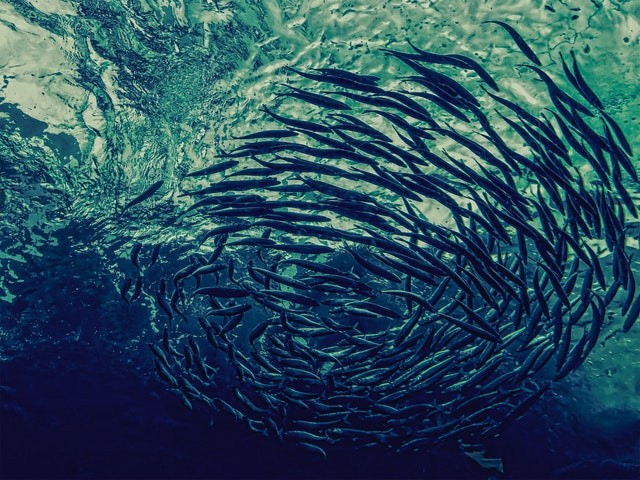People at sporting arenas may occasionally produce a phenomenon called a wave, in which groups of people rise up and shout with their arms raised in unison. On December 22, researchers reported in Current Biology that freshwater fish called sulphur mollies do the same, and they do it for their own survival.
Hundreds of thousands of fish working together creates a wave effect that protects them from birds.

Fish Waving Behavior
According to Jens Krause, a researcher at the Leibniz Institute of Freshwater Ecology and Inland Fisheries in Berlin, the surprises came when researchers realised how many fish can act together in such repeated waves.
There are up to 4,000 fish per square meter and sometimes hundreds of thousands of fish participate in a single fish wave. Up to two minutes can pass between waves, with one every three to four seconds, according to Phys.org.
Toxic sulphuric springs in which these unusual fish can be found make this behaviour easy to spot. The reason for this is that mollies will do the same thing when they see a human in the vicinity.
As a co-first author with Carolina Doran and Juliane Lukas, a researcher at the Leibniz Institute of Freshwater Ecology and Inland Fisheries, David Bierbach remarked, that researchers at first didn't completely comprehend what the fish were really doing.
In football (soccer) stadiums, the researchers were reminded of the La-Ola or Mexican waves. There were many fish-eating birds in the area, so they assumed that the fish waving was a form of defence.
Anti-predator Role of Fish Waves
Due to the wave action of the animals, researchers decided to investigate its anti-predator properties. Findings from their research showed the presence of very visible, recurrent and rhythmic surface waves by the fish.
The likelihood of being captured by one of its avian predators also dropped with wave number. In reaction to wave displays, birds also shifted their perches more often than in control treatments, which suggests that they'd opted to redirect their assaults elsewhere.
The data support the idea that fish waves have an anti-predator role. This is the first time that a collective activity has been shown to reduce an animal's predation risk, and the data support this conclusion.
Does Fish's Waving Limit Birds' Chances of a Victorious Attack?
There are substantial implications here for the study of communal behaviour in animals, according to the researchers.
Scientists have so far focused on how patterns emerge from the interactions of individuals, but it remained unknown why animals generate these patterns in the first place, Krause said. Anti-predator protection may be provided by certain collective behaviour patterns, according to the research.
It's obvious that the fish's waving decreases the chances of birds executing a victorious attack on sulphur mollies. The reason behind this is still a mystery.
For more news, updates about fishes and similar topics don't forget to follow Nature World News!
© 2025 NatureWorldNews.com All rights reserved. Do not reproduce without permission.





